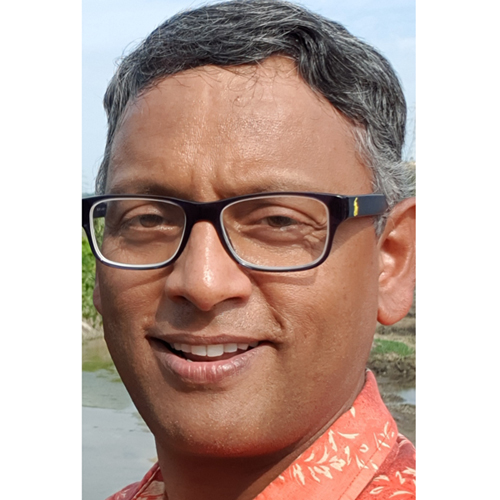Columns
Social protection in Nepal
Spending on social security has reached more than 3.5 percent of the gross domestic product.
Chandra Ghimire
Social protection refers to policy measures which address the vulnerability, deprivation, risk and destitution of the common people. The social protection system in widest use across the world constitutes three forms: labour market intervention, social insurance and social assistance. Labour market intervention includes giving cash or food for work. Social insurance is associated with contributory schemes that protect the beneficiaries from high premiums. Its examples are pension and health insurance plans. Social assistance aims to help the most vulnerable people who lack means of minimum support. This may include support to widows, single parents, disaster victims, disabled people, destitute people and orphans.
Nepal does not have a long history of social protection. A pension system has existed for many years. An old-age allowance system was launched in 1994 under which senior citizens over the age of 75 years received a monthly allowance of Rs100. Currently, nearly 80 schemes are in operation. Nepal's resource allocation for social protection has reached more than 3.5 percent of the gross domestic product. In the European Union, the figure is 28 percent. Japan, China and India spend respectively 22, 6.5 and 1.6 percent of their gross domestic product on social security.
Social security allowances
Social security allowances in Nepal, which conceptually represents the social assistance dimension of social protection, mainly consist of government pensions, senior citizen allowances, and support to single women, widows, under-five Dalit children, under-five children from the Karnali region, persons with disabilities and people from endangered communities like Raute and so forth.
Support in the health sector includes antenatal care services to expectant mothers, free vaccination to infants, and treatment finance to children under 14 years, adults with acute non-communicable diseases and senior citizens undergoing replacement of cardiac valves. Major support in education includes free education up to class 10 in community schools, scholarship programmes for girls and boys, and mid-day meals, school uniforms, and books and stationery in community schools. In the agriculture sector, support takes the form of fertilisers, seeds, agriculture tools and equipment. To ensure smooth supply of essential foods, mainly in remote areas, subsidised food transportation and iodised salt are provided. Housing schemes such as housing for Dalits and support for affected families of the 2015 earthquake to reconstruct houses are the latest instances.
Following federalisation, overlapping has gone beyond the horizontal limit and taken the wrong course on the vertical side too. For example, the single women allowance is no more confined to the federal government and is spreading to the local level. The database of beneficiaries has been an intriguing topic. The database exists, but it stands alone. The information in the database is of individuals while it is family-based in the Opportunidades system in Mexico and the Bolsa Familia system in Brazil, allowing them to link poor families with other social protection schemes. In such circumstances, the chance of overlapping or duplication of benefits is a common phenomenon.
Another big problem is the minimum use of information technology in data management. On account of the deficiency, a serious question about the validity of the data is quite logical. Moreover, internet coverage and the presence of banks has not reached all the local levels. Banking illiteracy is still prevalent among the beneficiaries and they are incapable of utilising transparent cash transfer to their bank accounts. This makes the system prone to manipulation. Cumbersome bureaucracy delays cash transfer. Due to this reason, the beneficiaries complain of getting their payment very late.
Mexican and Brazilian examples
First, it would be very appropriate to learn from the Mexican Opportunidades and the Brazilian Bolsa Familia. Both target the poor and ease cash transfer. It is noteworthy that both programmes have fixed certain conditions that the beneficiaries have to meet with regard to fulfilling education and health care of their children. Second, the adoption of an integrated system would be a bold step towards revamped social protection management. Such a move should be accompanied by prudent information technology solutions. Furthermore, a national identity card system, which is now being developed, should be made the basis of the integrated system.
Third, an overarching policy will be instrumental in shaping a national frame for the concerned federal, provincial and local authorities. Fourth, someone should play the role of overall policy coordinator at the federal, provincial and local levels of government. Fifth, ongoing and post-evaluation must be accorded priority. Finally, affordability and sustainability should be the bottom line while augmenting any new scheme or resource. Whatever be the case, Nepal looks vibrant in social protection. Yet, it has to march a long way to have an organised welfare system.
Ghimire is a secretary of the government of Nepal.
***
What do you think?
Dear reader, we’d like to hear from you. We regularly publish letters to the editor on contemporary issues or direct responses to something the Post has recently published. Please send your letters to [email protected] with "Letter to the Editor" in the subject line. Please include your name, location, and a contact address so one of our editors can reach out to you.




 13.3°C Kathmandu
13.3°C Kathmandu















